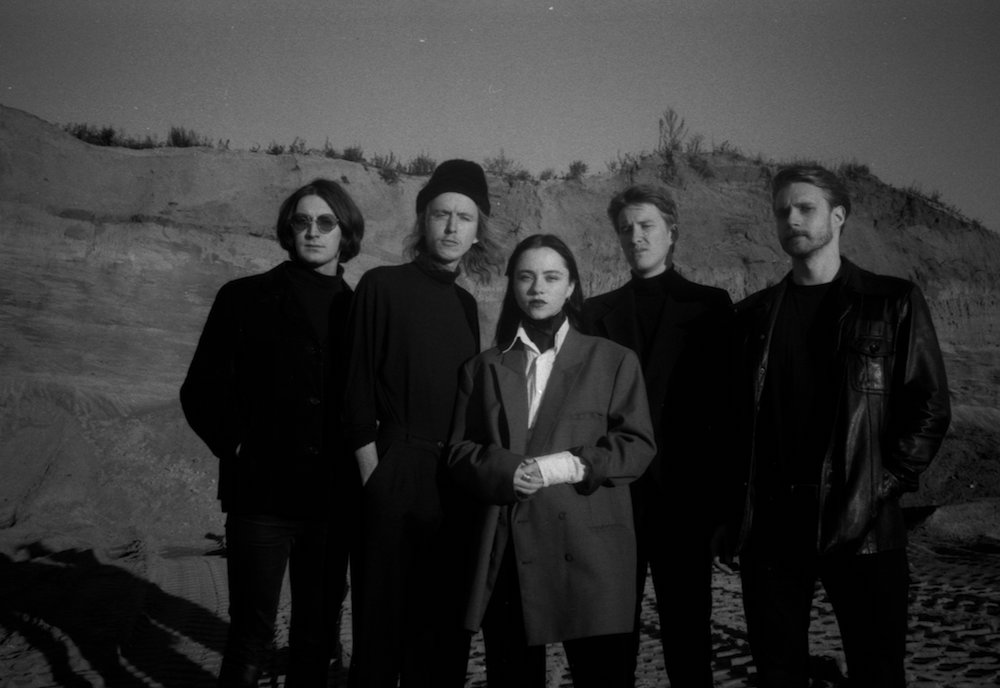The group, composed of Eliann Tulve (songwriter, vocals), Lauri Raus (songwriter, guitar), Gert Gutmann (guitar) And Caspar Salo (drums), formed in 2013 in Tallinn, Estonia.
Since the release of their debut single Heavenly Creatures in 2015, Holy Motors has solidified their dark, hazy cowboy sound, which, in my opinion, is the most realized in their 2018 record
Slow Sunday. Its opening track “Honeymooning” features Eliann Tulve’s sultry Americana-inspired vocals in full bloom, lulling listeners into a pensive, haze-like state. “Under the moon/He’s watching,” she sings, conjuring images of a worn, tired cowboy, rhythmically swaying up and down with each trot of their horse. Just as the cowboy relentlessly rides into the night, Tulve urges you to do the same: her steady flow encourages listeners to sink into autopilot mode, balancing out the more lively background instrumentals that keep you afloat in a sea of what feels like velvet. The song is laced with mystery; it's as if you are crossing a hill in the night and can’t anticipate what comes next.
Naturally, I thought the music video for “Honeymooning” would follow the same dark, unassuming cowboy’s-lonesome-journey-inspired path. But it tells a different story.
Instead, we watch intimate snapshots of someone’s honeymoon. Or at least one person’s memory of it. “Honeymooning” is encased by a vintage film reel effect, partly destroyed and tinged by the passing of time, giving it a lived-in, tired feel. It is something of the past. The woman in it, the memories she created, the love she shared—all trapped in another time. As viewers, we are invited to see this woman through the eyes of a lover, now clouded by the veil of times past, turning a once-cherished experience into a distant memory.
The video focuses on this woman in her element, immortalized by her sweetheart’s film. In these frames, she simply is; she is not posing, nor acting for another’s pleasure. She coalesces with her environment as if she is designed to fit in it like a puzzle piece. Alone and dreamlike, the cameraman captures her wandering in the desert as if the sand speaks her language and can read the intricacies of her mind, which we, as viewers, are not fortunate enough to be privy to. Yet her simplicity is not engulfed by the other, more demanding surroundings, like the dingy motel she checks into with her sweetheart-cameraman, or the blinding Las Vegas strip casino lights. They uplift her. They highlight her beauty.
The woman outshines whoever is behind the camera. We never learn who this person is—or was. Part of the video’s appeal (other than its dreamy aesthetic) is that it is personal. The possibilities of who these people are and what the spirit of their relationship exactly is is quite broad. This obscurity—the absence of dialogue between the hidden observer and the subject, the woman—gives us the ability to apply our own relationship (or at least, what we wish we had) to what we are seeing. It's relatable, to some more than others.
But the couple’s relevance to modern-day relationships is limited. The video does not portray their relationship in its entirety. Instead, it captures how the cameraman chooses to see her. “Under the moon/He’s watching,” now takes a different meaning. Regardless of whoever “he” refers to, it's evident the protagonist is aware of the camera’s persistent gaze—our gaze—as we attempt to uncover the mystery of their retired love.
What’s clear is that the video is a romanticized preservation of the woman. What we see differs from the couple’s reality. Though the camera almost exclusively only focuses on the woman, the lyrics, sung by Eliann Tulve (which, in my mind, represent the woman in the video) still yearn for attention. “We’re drowning/In our own tears/I cannot hold myself/On our honeymoon/Where were you,” she sings. Togetherness does not equal intimacy. Though the cameraman seems pervasive, his presence is eclipsed by the camera.
This reminds us how cameras, regardless of how high-definition their resolutions may be, can be used to represent something synthetic. When looking at film as a medium of communication, it's important to realize that while it may be framed as something authentic, there’s always a larger story separated from what we see on screen. Even if someone’s story seems as clear as day, we still have to read in between the lines.
Honeymooning is available to watch on YouTube here!
Written by Natalie Jenkins, LJI Reporter




